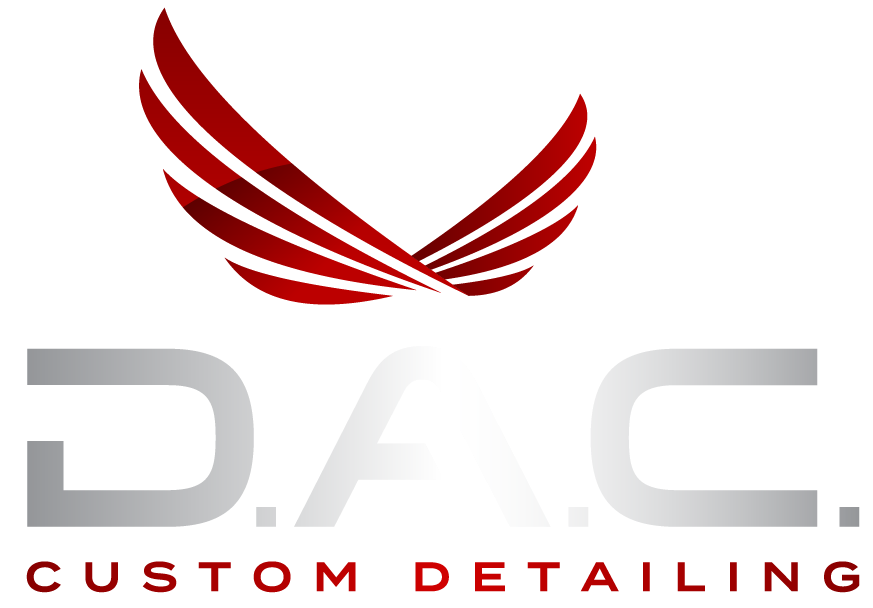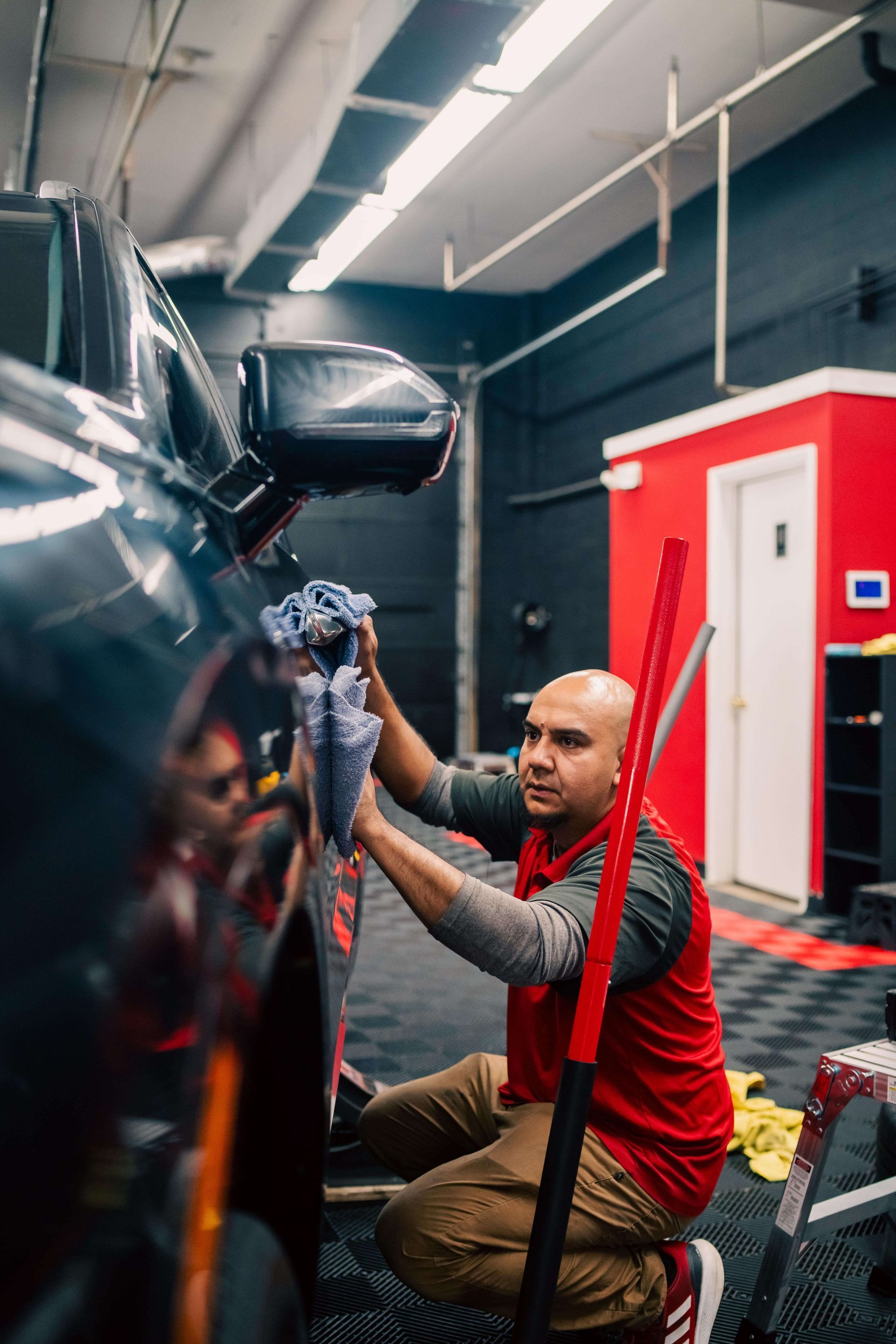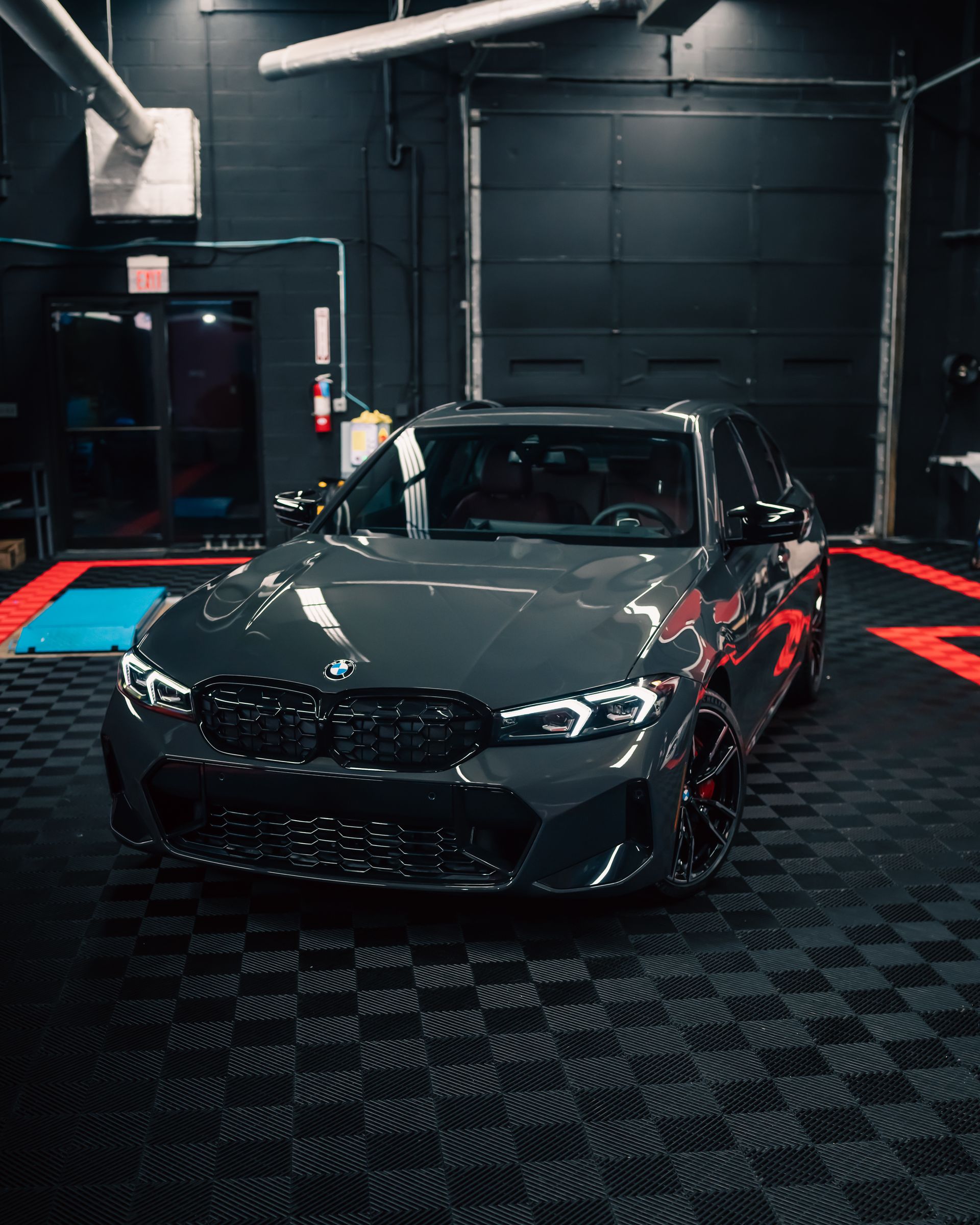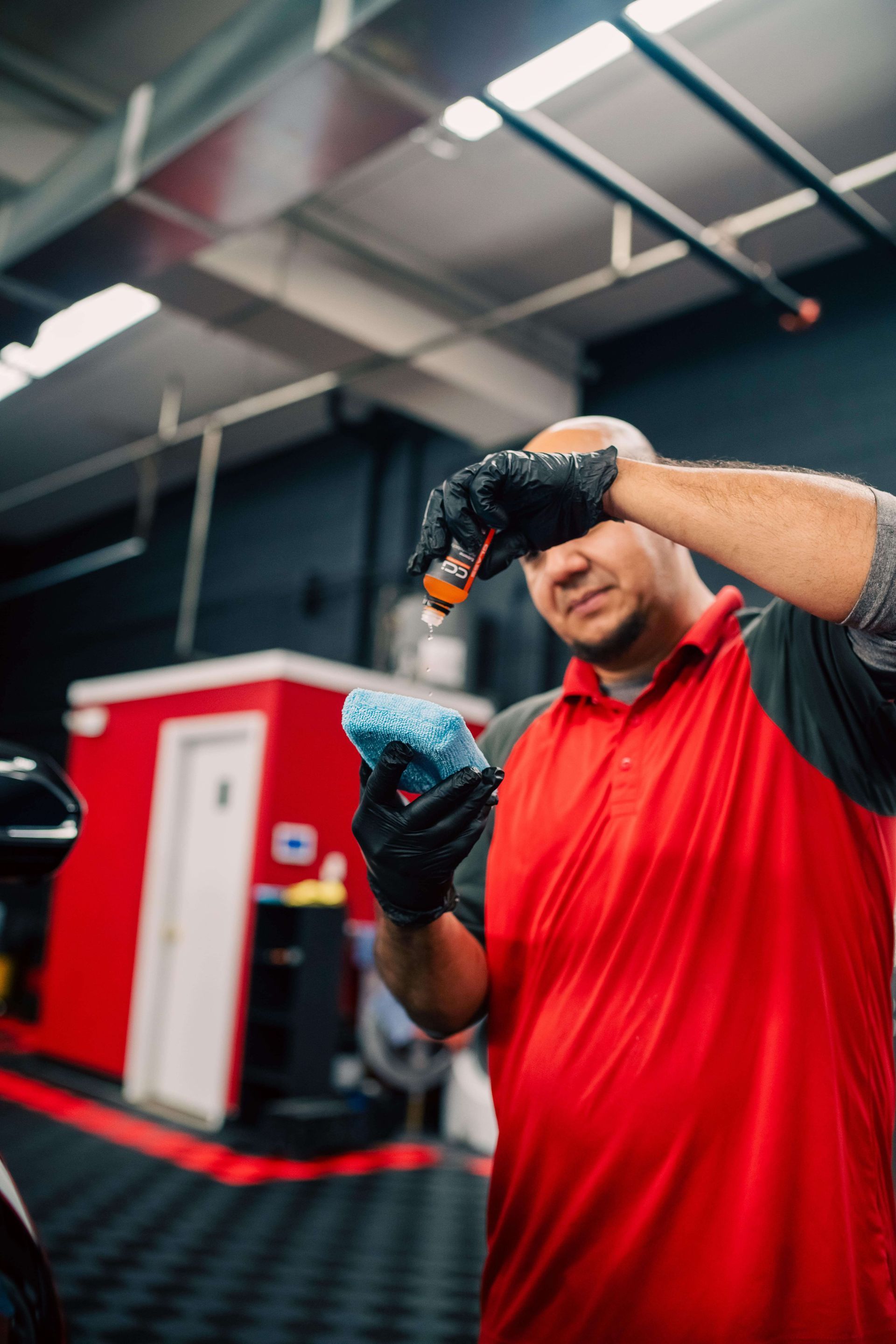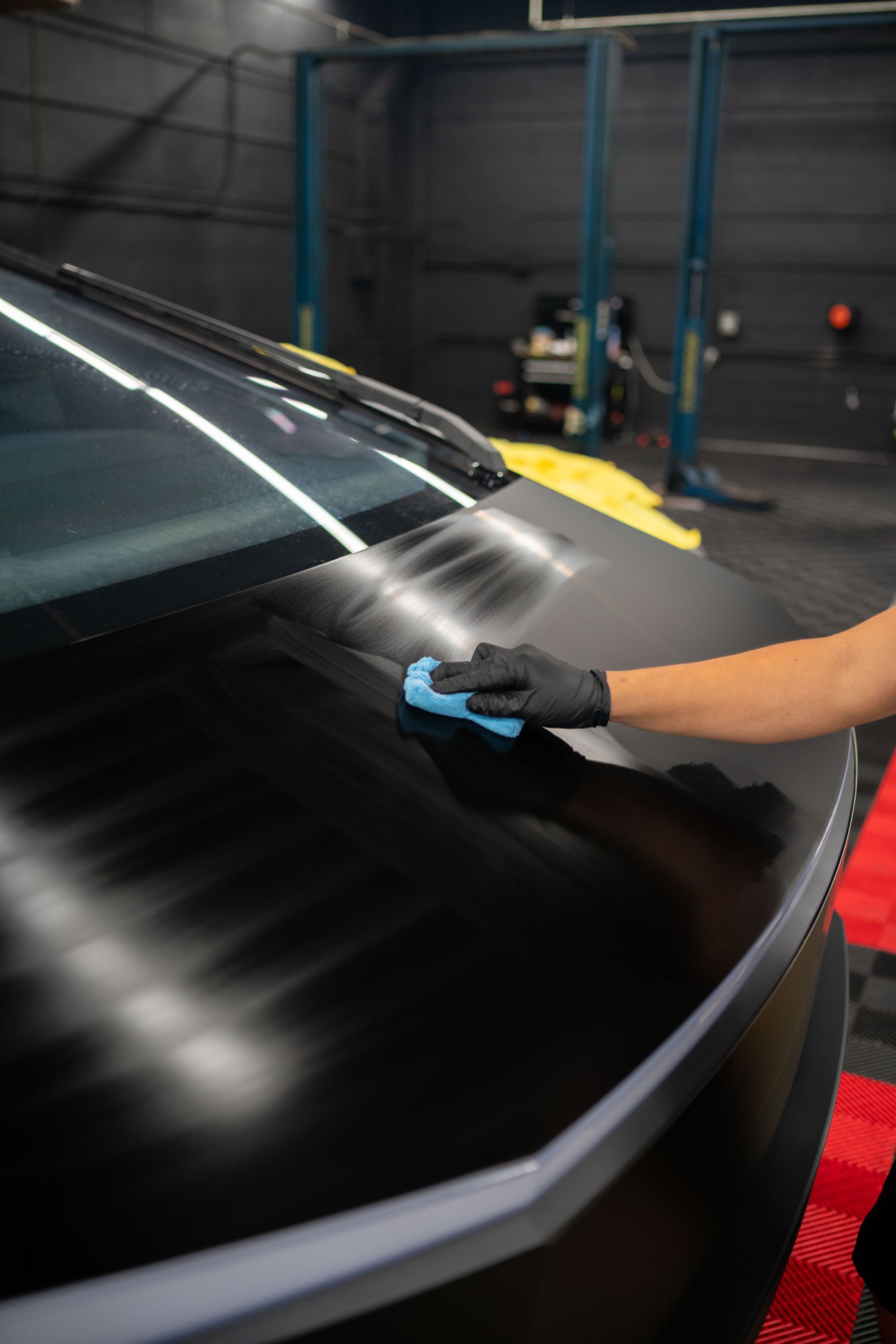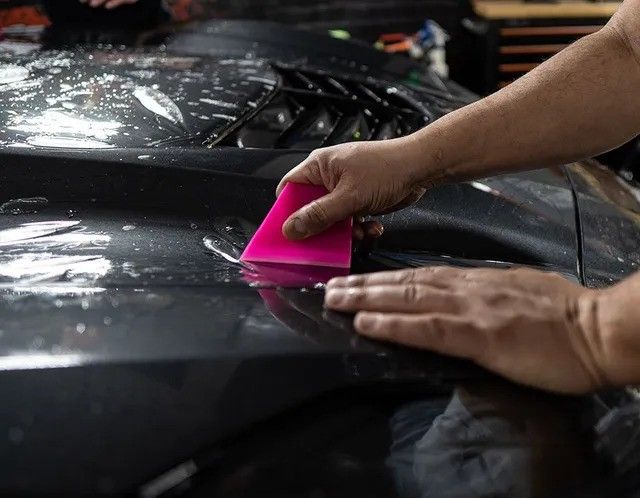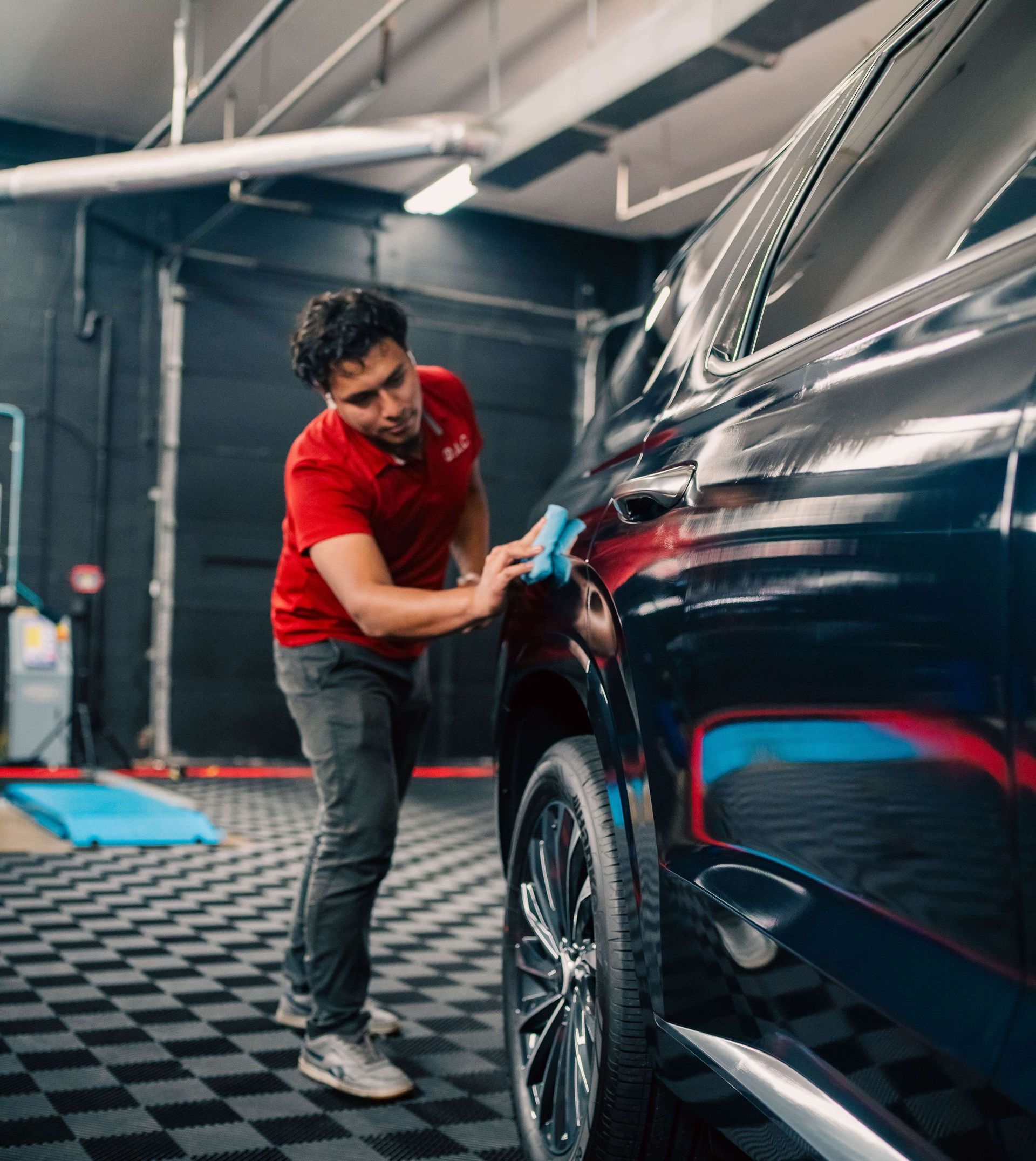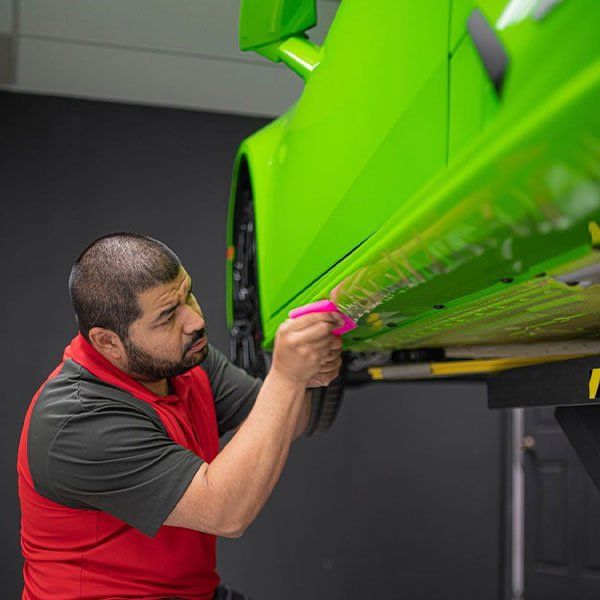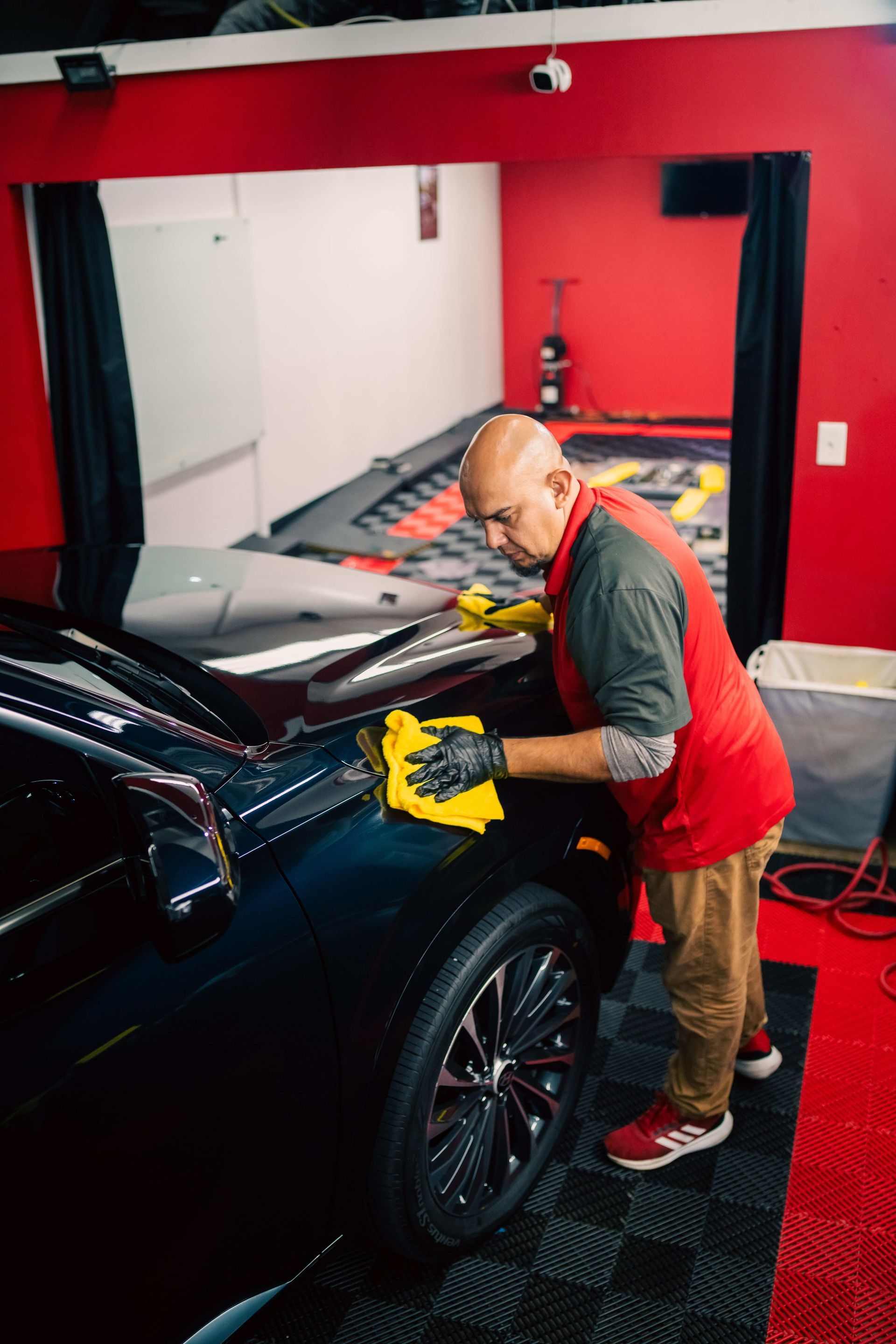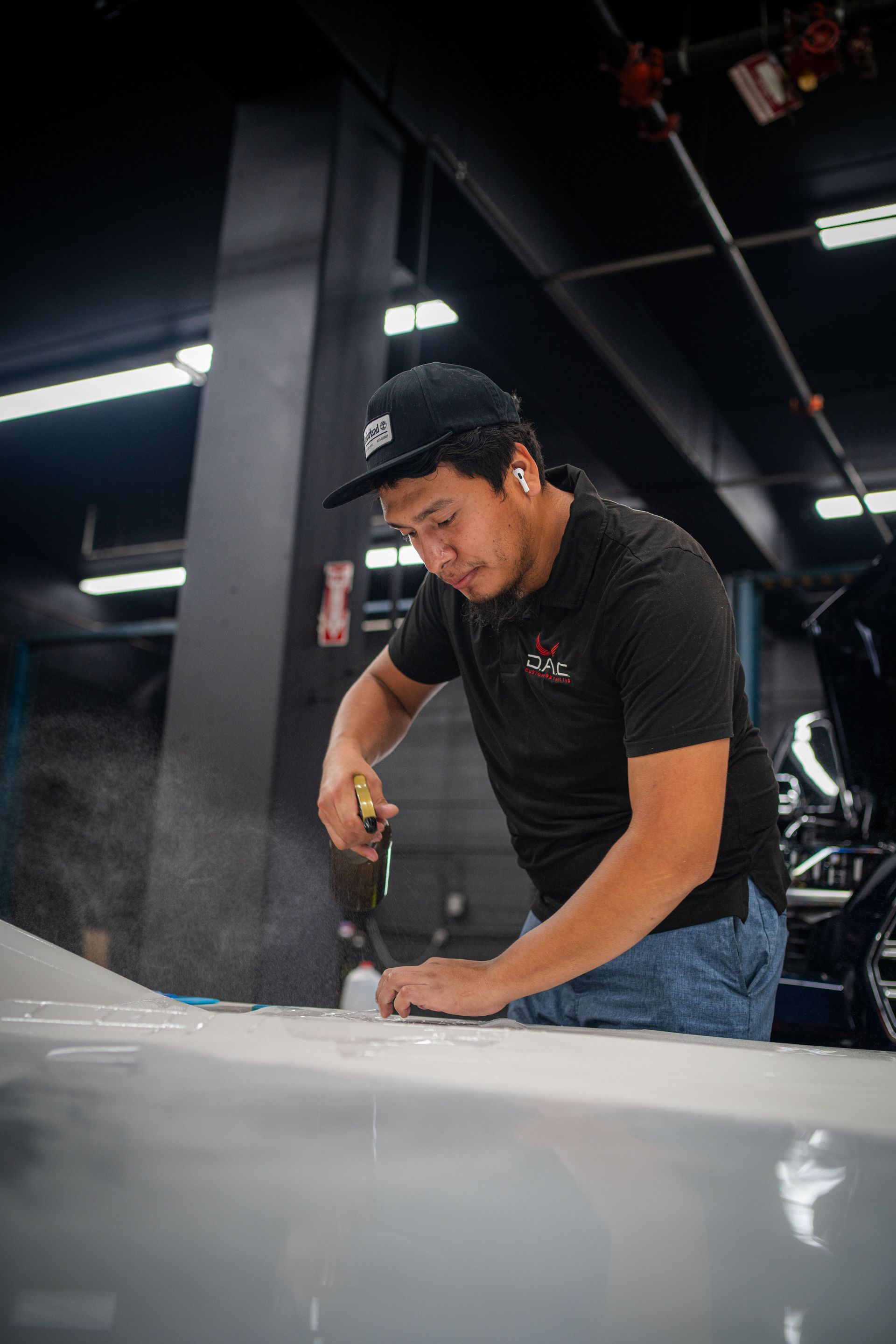REVIVE, PROTECT, MAINTAIN
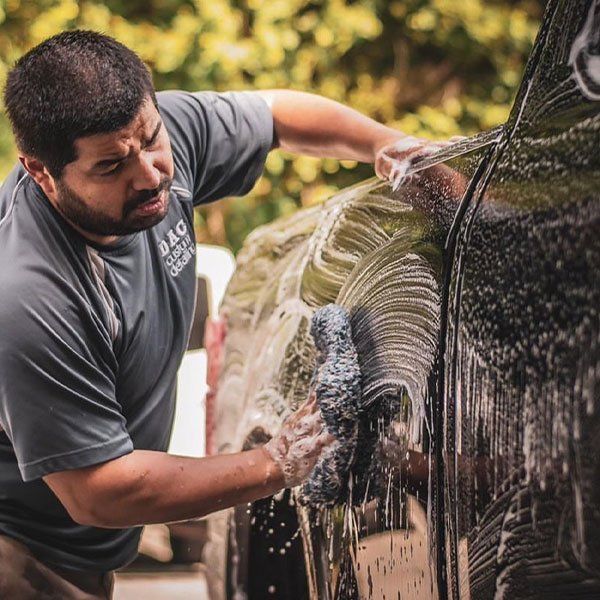
It’s common knowledge that cars are expensive investments, and there’s nothing worse than watching your car’s exterior slowly deteriorate over time. If your car is starting to look a little worse for wear, you must have heard at least once that regular car detailing is the best way to keep it looking clean, shiny, and great. But do you truly understand the many benefits and rewards of regular car detailing?
Our team at D.A.C. Custom Detailing is here to tell you that investing in regular car detailing is one of the best things you can do for your car. Not only will it help keep your car looking great, it will also give you peace of mind, save you time and money in the long run, and ultimately ensure a safer driving experience. So buckle up, and let’s take a look at some of the reasons why investing in regular
car detailing is so beneficial.
Benefits of Regular Car Maintenance
Regular car maintenance is one of the best things a car owner can do for their vehicle. Just as we need regular check-ups to stay healthy and functioning, cars need regular maintenance in order to keep them running smoothly and efficiently. The benefits of this upkeep are numerous, ranging from money saved from fuel costs to a reduced chance of major mechanical issues that could be costly or dangerous.
Car owners who focus on routine maintenance will find that their vehicles tend to last longer and perform better. This is especially the case when following manufacturer guidelines related to oil changes, fluid flushes, and other regular services. Regularly checking and replacing air filters and spark plugs, as well as examining hoses and belts, can improve fuel efficiency and help avoid costly engine issues. By investing in regular car maintenance, it is possible to save on gas by ensuring that the car remains in top condition.
Of course, it is important to note that neglecting routine maintenance can be costly in the long run. Without proper care, simple issues such as worn-out belts may turn into larger problems that require extensive repair work. It is also much more difficult for an auto shop to detect problems when they aren’t checked regularly, leaving open the possibility for deeper issues that could have been avoided with consistent care.
Ultimately, regular car maintenance is essential for keeping your car running at its peak performance level while saving you from any potentially hazardous situations that arise from a lack of attention. By being vigilant about preventative measures for your vehicle, you can ensure plenty of safe miles ahead with improved efficiency and a lower chance of major problems down the line.
Improved Safety
Having a cleanly detailed car ensures improved safety both on and off the road. When windows, headlights, and mirrors appear clear of debris, visibility is increased, and drivers are more likely to spot various possible hazards that quickly come their way. This is particularly beneficial at night, when darkness obstructs normal vision. Furthermore, after a thorough detailing, tires that have been cleaned of any built-up dirt will have improved traction for better grip and control on the roads, wet or dry. Hence, road handling is enhanced, enabling the driver to maneuver safely in slippery conditions such as snow or a heavy downpour.
On the other hand, there are detractors who argue that one should focus more on regular maintenance checks done by professional mechanics rather than wasting money on detailing. While important, it is not an "either/or" choice between detailing and regular maintenance, as both play an important role in keeping a car in shape, both performance-wise and safety-wise. Besides mechanical checks, detailing allows for closer inspection of external parts such as tires, which may be worn down due to poor road conditions or poor alignment.
Therefore, cleaning cars with a professional detailer can not only improve vehicle aesthetics but also provide an extra layer of protection to keep drivers safe on their daily commutes, something that any car owner can surely appreciate. Naturally, then, it’s important to get your car fully protected from the elements by taking advantage of protective sealants and waxes, which will be discussed further in an upcoming section.
Protection from the Elements
The external protection that comes with regular car detailing can contribute significantly to your safety and the overall integrity of your vehicle. Unwanted external elements such as dirt, dust, and other contaminants can build up over time and reduce the protective layer on the paint job, making it more vulnerable to scratches. Long-term exposure to sun and rain or contamination from bird droppings increases the chances of rust accumulating in concealed places. Regular
car detailing keeps these conditions at bay—the thorough cleaning removes surface dirt and excess moisture, while wax and polish protect the paint over time, ensuring the coating is strong and resilient against aggressive weather conditions.
There is an ongoing debate about whether car detailing can actually improve safety, with opponents pointing out that periodic maintenance of your brakes, tires, and other automotive components should be your number one priority instead. But regular detailing should not be dismissed, as it helps uncover potentially dangerous issues before you have an accident. Automotive specialists often use car detailing to inspect for paint chips as well as any dings or dents through a close examination of the entire bodywork. Any potential signs of rust or decay can also be easily noted during a dramatic detailing session.
Today’s modern technology ensures that car owners do not need to compromise their schedules for regular maintenance check-ups if they have detailed their cars correctly, saving time, money, and, most importantly, lives on the roads. With proper protection from the elements layering your ride, you can help maintain its durability so that it looks good well into the future.
How Does Detailing Improve Car Appearance?
When it comes to the aesthetics of your car, proper detailing is key. Detailing can make a world of difference to the appearance of your vehicle, and routine detail work can greatly improve the look of your car over time. From waxing to polishing, detailing provides numerous car care benefits that can enhance its beauty and longevity.
When done properly, detailing helps a car regain its original luster and shine by removing minor scratches and swirls, restoring trim and brightwork, cleaning interior fabrics, and removing dirt and grime from difficult-to-reach areas. Regular detailing will help you keep up with the overall cleanliness of your vehicle and will also maintain its resale value should you decide to part ways with it in the future.
On the flip side, some drivers argue that detailing is unnecessary or too costly for them to consider. But with regular washings, touch-up paint jobs, and touchless washes that don't require towel drying, those who are on a budget can still reap the many benefits that come with professionally detailing their vehicles. With that said, it's important to point out that detailers take great pride in their workmanship and often provide detailed packages at competitive prices.
No matter if you pay a professional detailer or choose to do the job yourself at home, regular car detailing is an essential way to keep your car looking great—all while protecting it from further damage caused by environmental elements. When it comes to keeping your car looking sharp for years to come, making an effort to stay on top of basic cleaning rituals can go a long way. By regularly cleaning and waxing the exterior of your car—the next step in maintaining its pristine condition—you’ll be able to unlock even more of the benefits that result from regular car detailing.
Properly detailing the interior of your car
It is also important to keep your car's interior just as pristine and clean. Detailing the interior will ensure that it looks just as polished and new as the exterior. This can involve vacuuming the seats and carpet, washing and conditioning the upholstery, cleaning the windows, removing dust and dirt particles that can settle into cracks, or getting rid of any unpleasant odors. There are a few methods for properly detailing the interior of your car.
The most often used method is shampooing with products created specifically for vehicles. Using this product requires diluting it in water, using a soft-bristled brush to work it deeply into fabric and carpet fibers, and then rinsing and vacuuming afterward. It is important to use a separate rinse bucket for rinsing the brushes, so no dirt gets back onto carpets or upholstery during this process.
The second method involves using steam cleaners to effectively treat hard surfaces like leather or vinyl without leaving any mess behind. While steam cleaners can usually be rented from local auto supply stores, they must be used carefully to prevent damage or warping to these materials. If you choose to use steam cleaners, make sure to read all instructions carefully before use.
No matter which method you choose for detailing the interior of your car, always remember to use proper ventilation while cleaning to prevent exposure to potential toxins released by cleaning or polishing solutions. Once completed, you'll notice how much better your car looks with a detailed interior—especially if you had previously neglected this area! It is important to keep both your vehicle's exterior and interior looking their best to extend the life of your car and keep it looking stylish for years to come.
Improves the healthiness of your car's components
The argument can be made that regular car detailing not only makes your car look great but also improves the healthiness of its components. Detailed cleaning removes dirt, dust, and other unwanted particles that build up inside the car’s components over time. This buildup can cause built-in systems such as air conditioning or even the engine itself to become clogged and run less efficiently, often leading to costly repairs down the line. A good detailing job by a professional technician will typically remove this buildup and make sure these systems are working at optimal performance levels.
On the other hand, some may argue that regular detailing may do more harm than good in terms of component health. After all, many of the products used in a detailed cleaning job can be abrasive and potentially damage paint, plastics, and other delicate surfaces if misused. The best way to reduce risk is to use experienced technicians who know how to properly apply these cleaning agents without damaging the car's components.
In conclusion, regular
car detailing has benefits beyond just making your car shine. It can help maintain component health by removing dirt and buildup from inside your car's internal systems, thereby reducing the chance of system failure from blockages and inefficient operation. To ensure safety while reaping these benefits, it is important to consult with an experienced technician to administer the detailed cleaning job.
How Regular Detailing Increases Your Car's Value
When it comes to increasing your car’s value, regular detailing can be an effective tool. Detailing involves more than a routine wash and wax; experienced professionals use specialized equipment, detailed techniques, and products of the highest quality to thoroughly clean, protect, and restore everything to your vehicle’s interior and exterior. From leather seats to metal components, detailing can bring out the best in any vehicle.
There are two main ways that regular detailing can increase your car’s value: aesthetics and overall condition. On the aesthetic side of things, having a sparkling exterior and luxurious interior will make your car stand out from the rest and attract higher bids from potential buyers down the line. Detailers also use various products to safely preserve surfaces and enhance colors for a lasting effect.
Meanwhile, when it comes to overall condition, detailing helps prevent rusting and corrosion on metal components, as well as preserve leather interiors and headlights with sealed plastic coatings. A periodic deep cleaning can remove stubborn dirt, grime, and salt, which can corrode metal parts over time, saving valuable resources from having to be replaced or repaired. This keeps your car running longer while retaining its original value—a win-win situation!
When debating both sides of this argument, it is important to note that not all car detailers will have access to the same resources or produce the same results. Poorly trained technicians may lack experience with tackling certain materials or could even unknowingly cause damage by using incorrect chemicals or harsh tools, which could ultimately lower the value of your car over time. Therefore, it is essential that you always choose an established detailer who has a proven track record of providing excellent service at a fair price. That way, you can be sure that your investment in keeping your car looking great will pay off in spades in the long run!
Responses to Common Questions with Explanations
Are the products used in car detailing safe for my vehicle?
Yes, the products used in car detailing are safe for your vehicle. Car detailing products are specifically designed to clean and protect your vehicle's paint and interior surfaces without causing any damage. In addition, most car detailers carefully select and use only high-quality products that will not strip off wax or leave residue behind. Additionally, many of these products are formulated to provide protection against water spots and other environmental contaminants that can degrade your vehicle’s appearance over time. Finally, car detailers always take extra precautionary measures when applying any product to ensure that it is properly distributed and free of any residue afterward.
What are the long-term benefits of car detailing?
The long-term benefits of car detailing are numerous. Regular car detailing helps keep your vehicle looking great and can protect its value over time by preventing it from fading, rusting, or developing other signs of premature aging. Car detailing also keeps all components, such as the paint, interior surfaces, tires, and windows, free of grime and dirt, helping to maintain the overall appearance of your vehicle. Additionally, regular car detailing can help prevent mechanical problems from arising, as dirt and debris can build up in car parts, leading to costly repair bills later on. Finally, car detailing is an easy way to reduce the chances of scratches and dents caused by normal wear and tear—something that can add up over time!
How often should I have my car detailed?
The frequency of car detailing should depend on your driving habits. If you take your car on highways frequently or have a longer commute, it's recommended you get your car detailed every three months. On the other hand, if you rarely drive your car and have an easier commute, then detailing every six months may be sufficient.
Regularly scheduled detailing will help maintain the appearance and condition of your car's exterior paint job and interior. In addition to safeguarding against wear and tear, regular detailing will also prevent dirt buildup and fading caused by sunlight exposure. This means that if done correctly, regular detailing will protect against water spots, brake dust accumulation, and other signs of aging.
What kinds of services does a car detailing typically include?
A car detailing typically includes a thorough exterior clean and waxing, interior vacuuming and shampooing, and polishing and protection of the wheels, tires, bumpers, trim, glass, and paint. The services may also include engine cleaning, leather conditioning, window tinting, chrome polishing, odor removal, paint correction or restoration, scratch or chip repair, headlight restoration, clay barring, interior sanitizing and detailing surfaces (dashboard, console), door jambs, and other hard-to-reach areas. With regular car detailing, you will make sure that these services are done with attention to detail to maintain the vehicle’s value and longevity.
Top Vehicle Detailing Service in Temple Hills, MD
If you want your vehicle to look its absolute best, then look no further than D.A.C. Custom Detailing in Temple Hills, MD! Our expert team of detailers will provide your car with the best interior and exterior detailing service possible, leaving it looking like new. Don't settle for a mediocre clean; trust our professionals at D.A.C. Custom Detailing to take your vehicle to the next level. Contact us today to schedule an appointment and experience the unparalleled quality of our detailing services!
